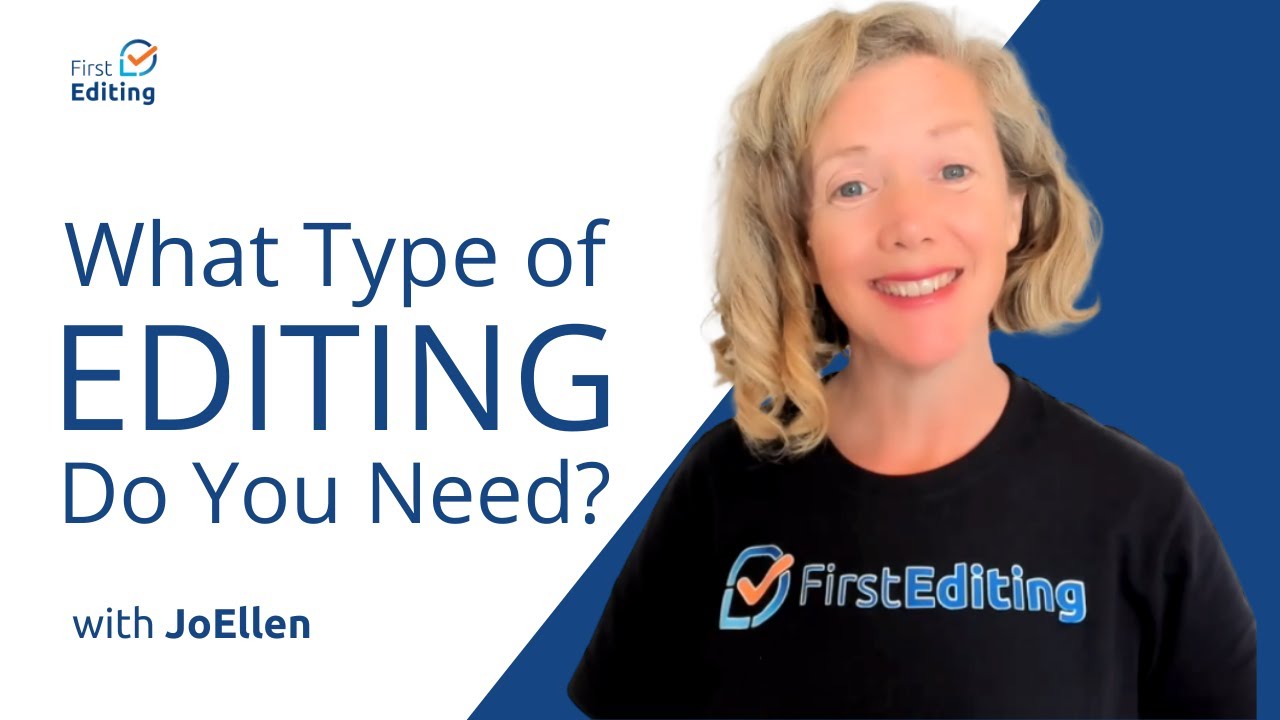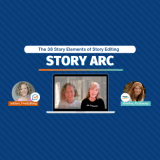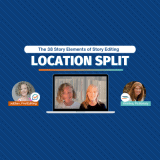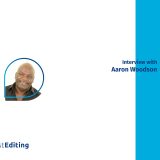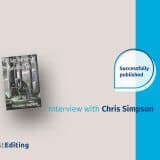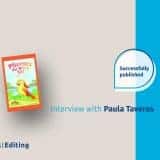
The Four (Now Five!) Main Types of Fiction Editing

Fiction editing is similar in some ways to traditional novel editing, but different in some ways as well, especially with the advent of specialized artificial intelligence (AI) used in the editing process.
Historically, writers have used four main levels of editing.
- Developmental (Content) Editing
- Line Editing
- Copyediting
- Proofreading
And now we can add to this list:
5. StoryCoach Editing
Novel editing, whether fiction or nonfiction, should generally occur in the order shown, from developmental to proofreading, with StoryCoach as either step 3 (if the novel is in pretty good shape) or step 5 (for a first-time author or for a manuscript that left the beta readers confused). Jim Dempsey, writing for the BookBaby Blog, concurs.
- Developmental editing comes early in the writing process, after a few drafts, and not every book needs it (though most do).
- Copy editing and line editing are done when the author is satisfied with the story after several rewrites. Every book should be copy edited.
- Proofreading is necessary for only the final, formatted book, right before publication, and every book needs proofreading.
What the Different Levels of Editing Entail
According to Louise Harnby, your developmental (content) edit addresses:
- Plot: This is the sequence of events that take the reader from the beginning to the end.
- Structure: This determines how the plot is organized. Even if B occurred after A, the reader might learn about B before the events of A are unveiled.
- Characterization: This is how characters are represented such that we can make sense of their behavior as we journey with them through the story.
- Pace: Pacing is about the speed at which the story unfolds. Effective pace ensures readers feel neither rushed nor bored. That doesn’t mean the pace remains steady; a story can include sections of fast-paced action and slower cool-downs.
- Viewpoint: In each chapter or section, readers should understand who the narrator is—whose eyes they are seeing through, whose emotions they have access to, whose voice dominates the narrative. It also means understanding the restrictions in play such that head-hopping doesn’t pull the reader out of the story.
- Narrative style: Is the narrative viewpoint conveyed in the first, second or third person? The choice determines a narrative’s style.
- Tense: Is the story told in the present or the past tense? Each has its benefits and limitations.
Regarding the next level of editing, line editing, Ms. Hornby states that a line editor should be watching for:
- Authenticity of phrasing and word choice in relation to character voice
- Character-trait consistency and unveiling
- Clarity and consistency of viewpoint and narrative style
- Cliché and awkward metaphor
- Dialogue and how it conveys voice, mood, and intention
- Sentence pace and flow, with special attention to repetition and overwriting
- Tenses, and whether they’re effective and consistent
- Told versus shown prose
The Chicago Manual of Style, the guide most often used in fiction editing and novel editing, has this to say about line editing (in your case, the publisher will be you, if you’re self-publishing).
Manuscript Editing as Opposed to Developmental Editing
Manuscript editing, also called copyediting or line editing, requires attention to every word and mark of punctuation in a manuscript, a thorough knowledge of the style to be followed, and the ability to make quick, logical, and defensible decisions. It is undertaken by the publisher when a manuscript has been accepted for publication.
Chicago also weighs in on the definition of proofreading.
What is proofreading?
Proofreading is the process of reading a text and scrutinizing all of its components to find errors and mark them for correction. Each major stage of a manuscript intended for publication—especially the final version the author submits to the publisher and, later, the copyedited version of the same—is generally reviewed in this way. Proofreading here, however, applies to the review of the manuscript after it has been converted to a format for publication but before it is published [Emphasis mine].
I can’t tell you how many authors have come to me for rush editing after having to pull their books down from online publishers due to bad reviews, not regarding their storyline, but because too many typos distracted the readers.
Why Fiction Editing is Needed
JoEllen Nordstrom, founder of FirstEditing.com, shares these important points in her related blog post.
Hiring a professional editor usually costs no more than a few pennies per word. Professional editors are more than happy to edit your work, and also to provide you with honest advice regarding the strengths and weaknesses of your manuscript. A professional fiction editor could offer valuable feedback on specific fiction elements, such as plot and characterization.
Why Hiring a Professional Fiction Editor is so Important
As Ms. Nordstrom notes in another relevant blog, “As a writer, it’s incredibly difficult to get published in today’s competitive market. Therefore, if you want to be noticed, it’s best to have a polished book…A good editor can provide you with an honest and professional critique of your work.”
What she kindly doesn’t mention is that friends and family cannot give you the same kind of honest feedback your professional editor can, simply because they love you and don’t want to hurt your feelings. This is not to say your professional editor doesn’t love you, but since they are paid to be honest, they’ll give you the (hopefully) constructive and honest feedback you need to further hone your craft.
JoEllen concludes, “Even the best and most established writers need editors. So if you’re just starting out, hire a professional book editor.”
And Now, for Something Completely Different…
StoryCoach Editing!
Created by Kristina Stanley, founder of Fictionary.co, this new, unique form of editing can also be called scene editing, but with a modern twist: the use of artificial intelligence along with the keen eye of your certified Fictionary Story Coach. Editors go through extensive training and have to provide a StoryCoach edit on an 80,000-word fiction novel in order to become certified, so you know your manuscript will be in good hands.
Your Story Coach will mark each scene in your fiction novel with any relevant story elements (there are 38 of them!) and in the end, produce a report and stunning visuals on scene length, characters in scene, point of view, use of sensory information to enhance the scene, plot holes, continuity issues, and more. It is a very intense look at how you can become a better storyteller, with specific, scene-by-scene input from your human editor, amalgamated into useful data by the AI.
Read more from Ms. Stanley in her blog geared toward self-publishing for new aspiring authors entitled “Everything you Need to Know about Fiction Editing.”
And remember, edit first, then publish.
References:
https://blog.bookbaby.com/2016/04/type-book-editing-need/
https://www.louiseharnbyproofreader.com/blog/what-are-the-different-types-of-novel-editing
https://www.chicagomanualofstyle.org/16/ch02/ch02_sec045.html
https://www.chicagomanualofstyle.org/book/ed17/part1/ch02/psec100.html
https://www.firstediting.com/why-hire-professional-fiction-editing-services/
https://selfpublishingadvice.org/everything-you-need-to-know-about-fiction-editing/




